VCAP6-CMA Deploy - Objective 1.4: Configure Infrastructure/Cloud-based Endpoints
VMware vRealize Automation VCAP6 VCAP6-CMA
Published on 16 January 2017 by Christopher Lewis. Words: 711. Reading Time: 4 mins.
Objective 1.4: Configure Infrastructure/Cloud-based Endpoints
Objective Overview
- Create credentials with vRealize roles assigned according to a deployment plan
- Manage credentials for endpoints according to a deployment plan
- Edit Data Collection intervals for specific resources
- Configure endpoint parameters (credentials, hostname, etc-) for infrastructure and cloud endpoints
Objective Prerequisites
The following prerequisites are assumed for this Objective:
- A full deployed vRealize Automation 6.x solution (minimal or distributed).
Objective Breakdown
Before we break down the above objectives, whilst not explicitly stated as an objective, I think it is important to cover how to create an Endpoint. I have covered the creation of Infrastructure and Cloud Endpoints in separate post(s):
- HOWTO: Create a vSphere Endpoint in VMware vRealize Automation 6.x
- HOWTO: Create an AWS EC2 Endpoint in VMware vRealize Automation 6.x
Each Endpoint (vSphere or otherwise) must also have an equivalent Proxy Agent or Distributed Execution Manager (DEM) worker.
Create credentials with vRealize roles assigned according to a deployment plan
The creation of Fabric Endpoints and Credentials are the responsibility of the Infrastructure Administrator role. In this section I’m going to create a credential to be able to connect to vCenter server.
To create a new Credential, complete the following steps:
Navigate to the Default Tenant vRealize Automation Portal (https://vra.fqdn/vcac).
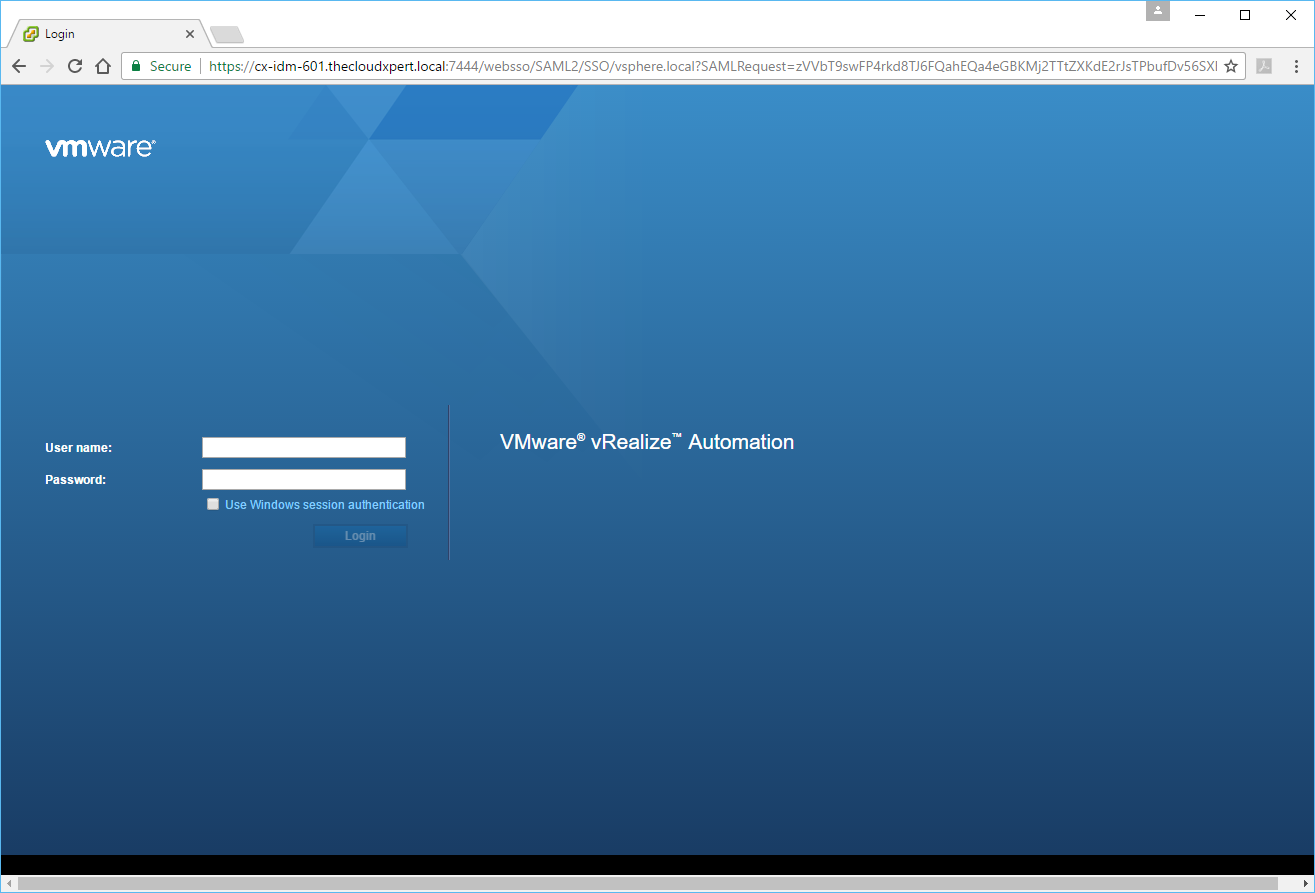
Login with the Infrastructure Admin account.
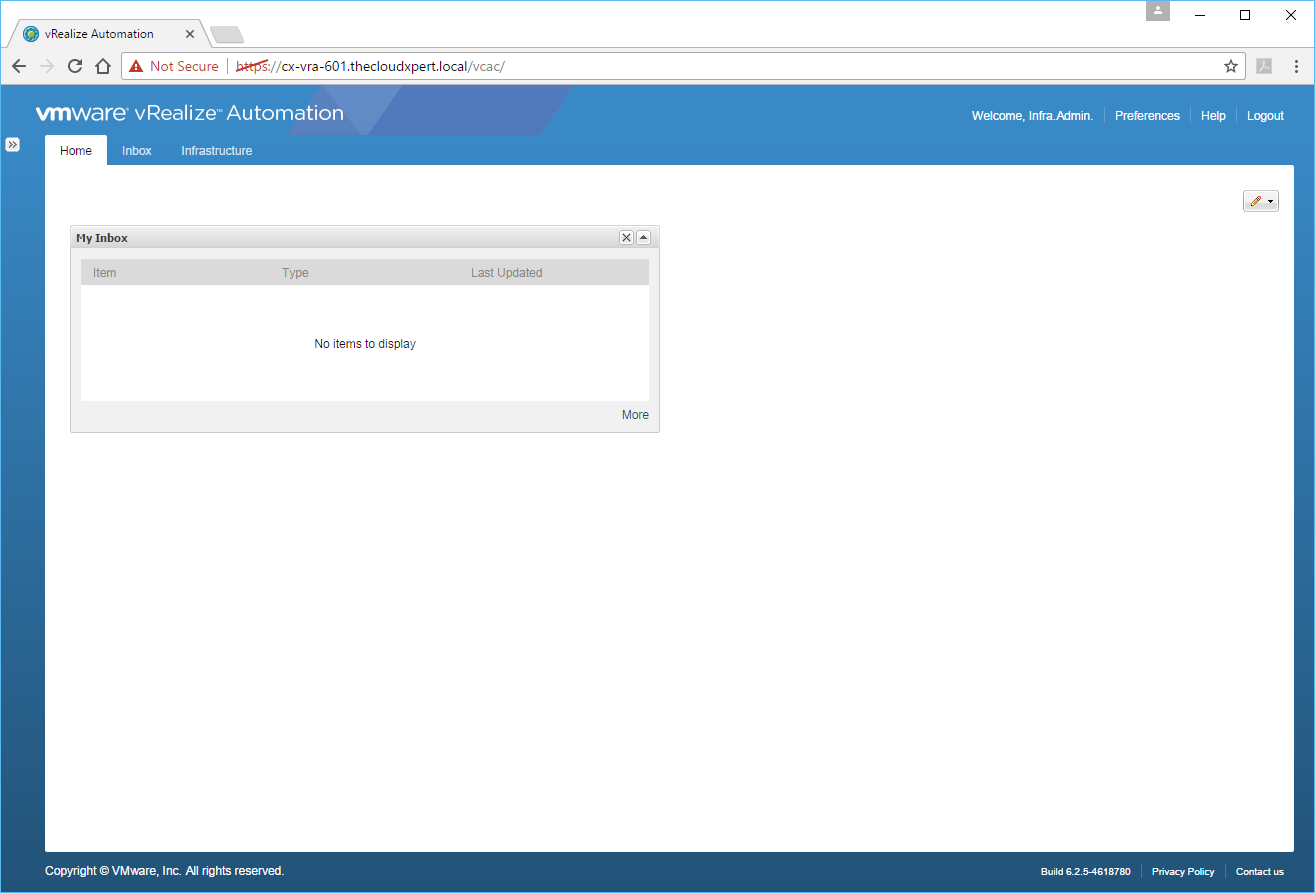
Click Infrastructure > Endpoints > Credentials.
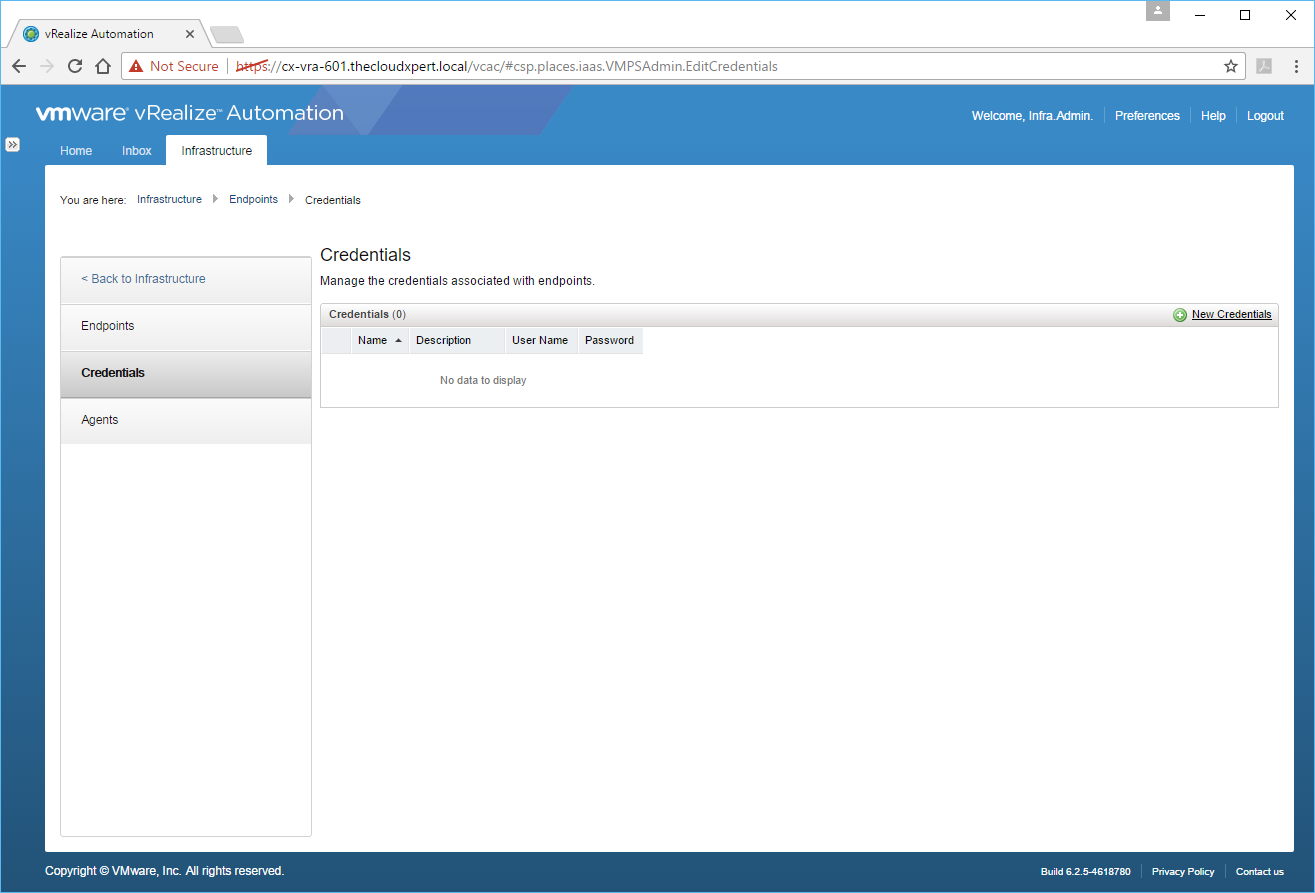
Click New Credentials.
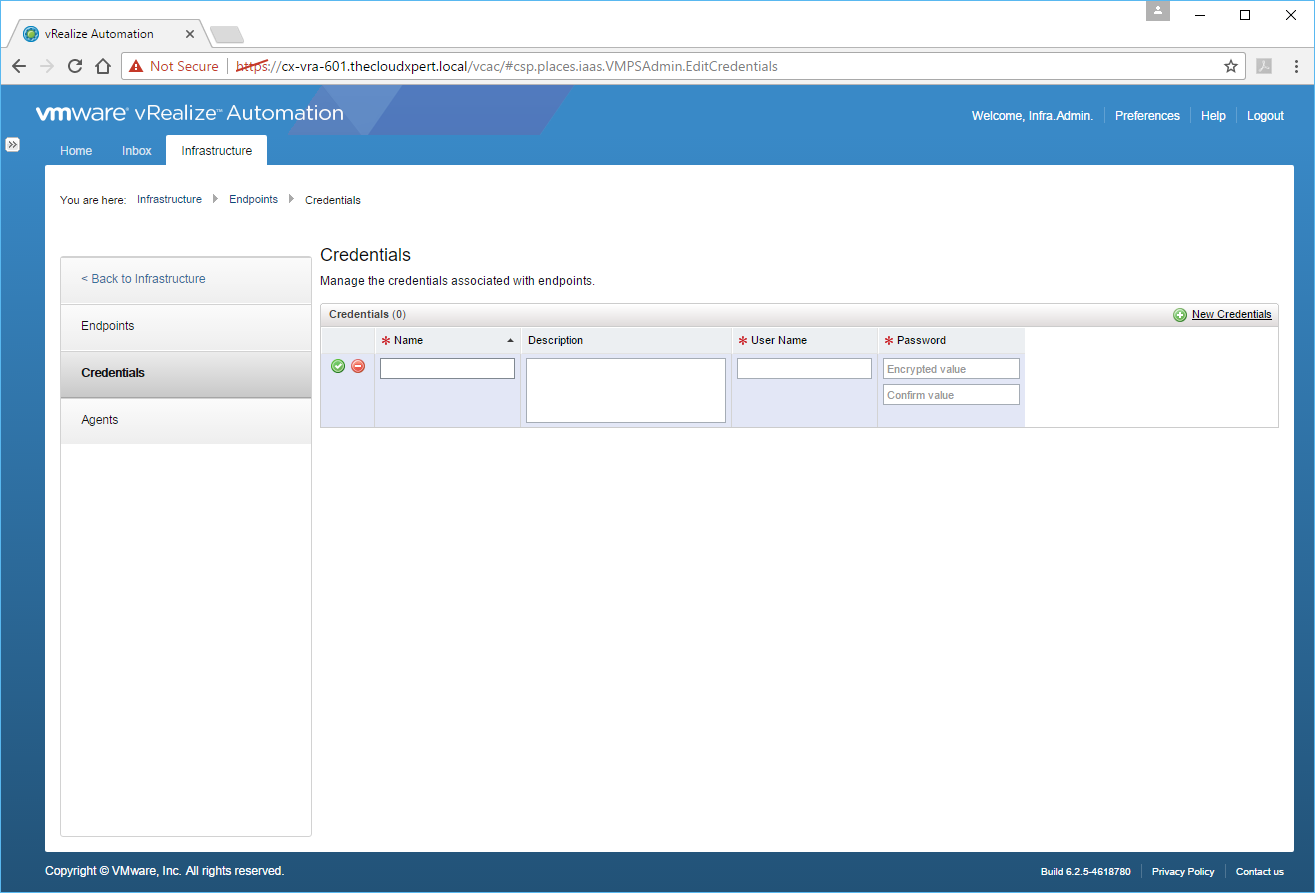
Enter the following information:
- A name within the Name text box.
- (optional) A brief description of the credential in the Description text field.
- The username (in the appropriate format) in the User Name text field.
- The password for the user in the Password text field.
Click OK (green tick).
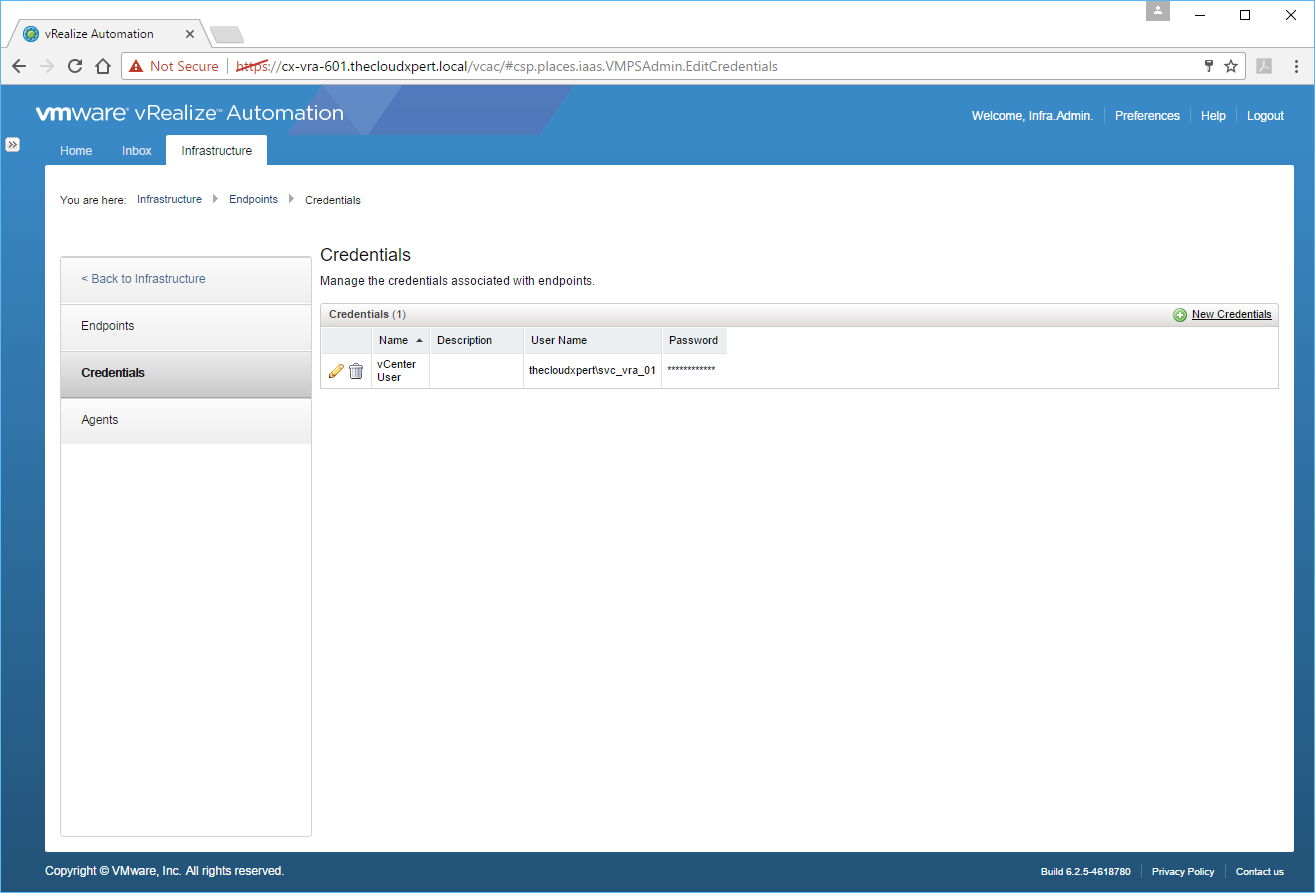
And there we have it - now you just need to make sure the account specified has the appropriate permissions within vCenter to be able to connect.
Luckily I have a Powershell/PowerCLI script that does that for me, but the information can be found in the vRealize Automation 6.2 Product Documentation .
Manage credentials for endpoints according to a deployment plan
I personally don’t see any difference between “creating” and “managing” credentials, if you can create a credential, you should be able to understand how to “manage” or update one.
I think this part of the objective is more about knowing the subtle differences between the type of credentials for the different endpoints you can create. Including:
- vSphere - Must be in domain\username format.
- vCloud Networking and Security (vSphere only) - Must be in domain\username format.
- NSX (vSphere only) - Does not have to include the domain name.
- Hyper-V (SCVMM) - Must be in domain\username format.
- KVM (RHEV) - Must be in username@domain format.
- NetApp ONTAP - Does not have to include the domain name.
- Orchestrator - must be in username@domain format.
- Amazon EC2 - access key ID (username) and Secret access key (password)
Edit Data Collection intervals for specific resources
To change Data Collection intervals for Fabric Endpoints you need to be have created a Fabric Group and have the Fabric Administrator role assigned.
I will cover the creation of a Fabric Group in a separate post, so lets go ahead and make changes to the Data Collection intervals.
Navigate to the Default Tenant vRealize Automation Portal ( https://vra.fqdn/vcac ).

Login with the Fabric Admin account.
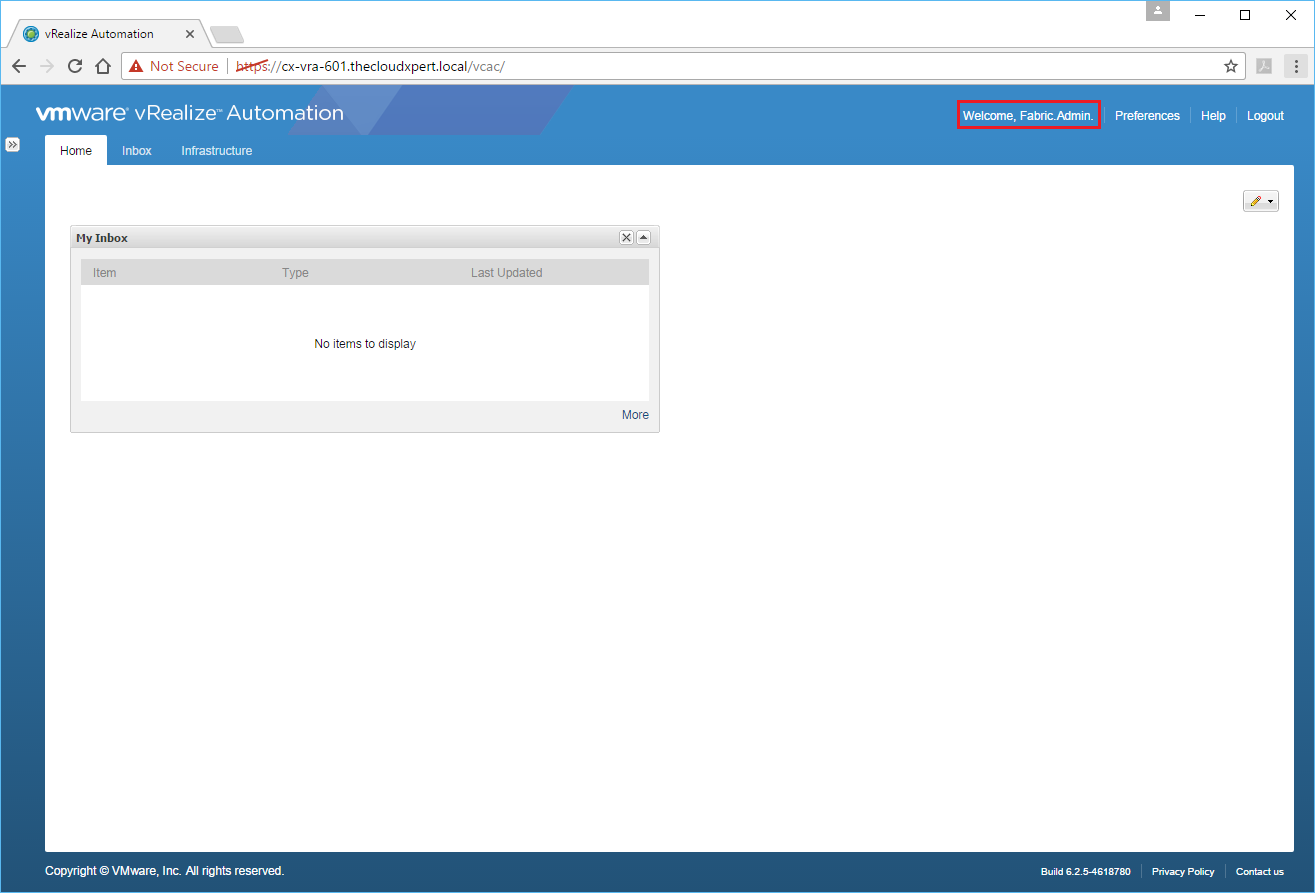
Click Infrastructure.
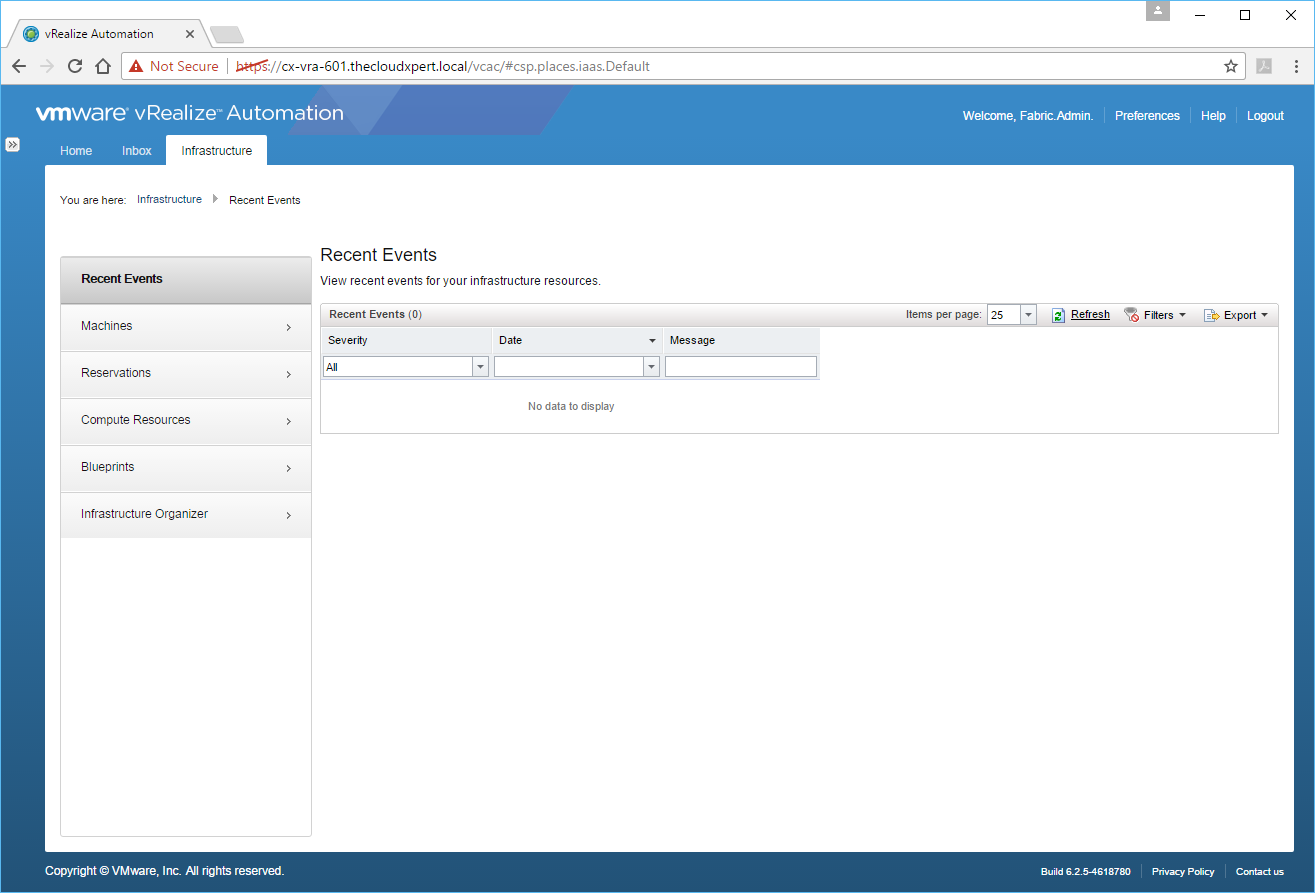
Click Compute Resources > Compute Resources.
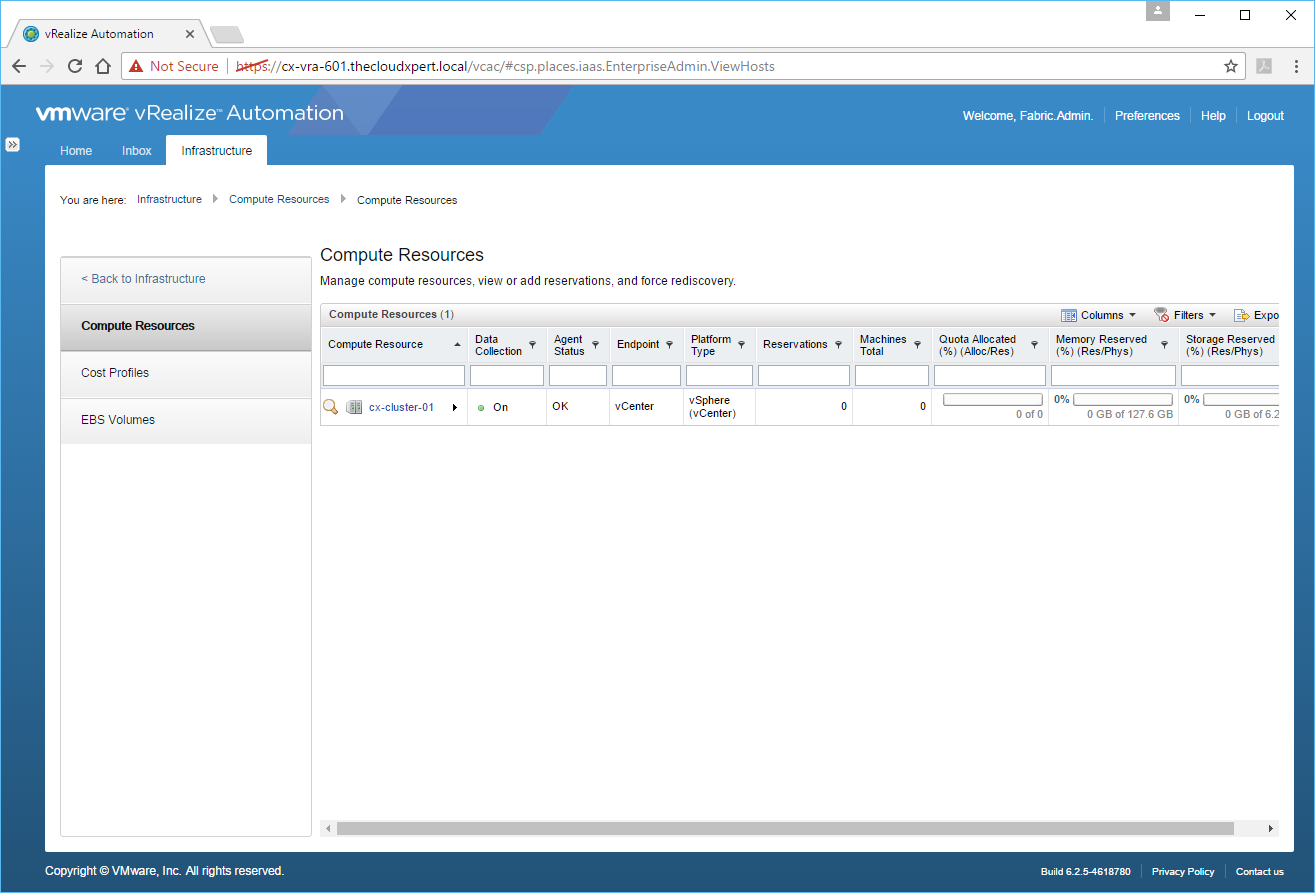
Hover over the compute resource and select Data Collection.
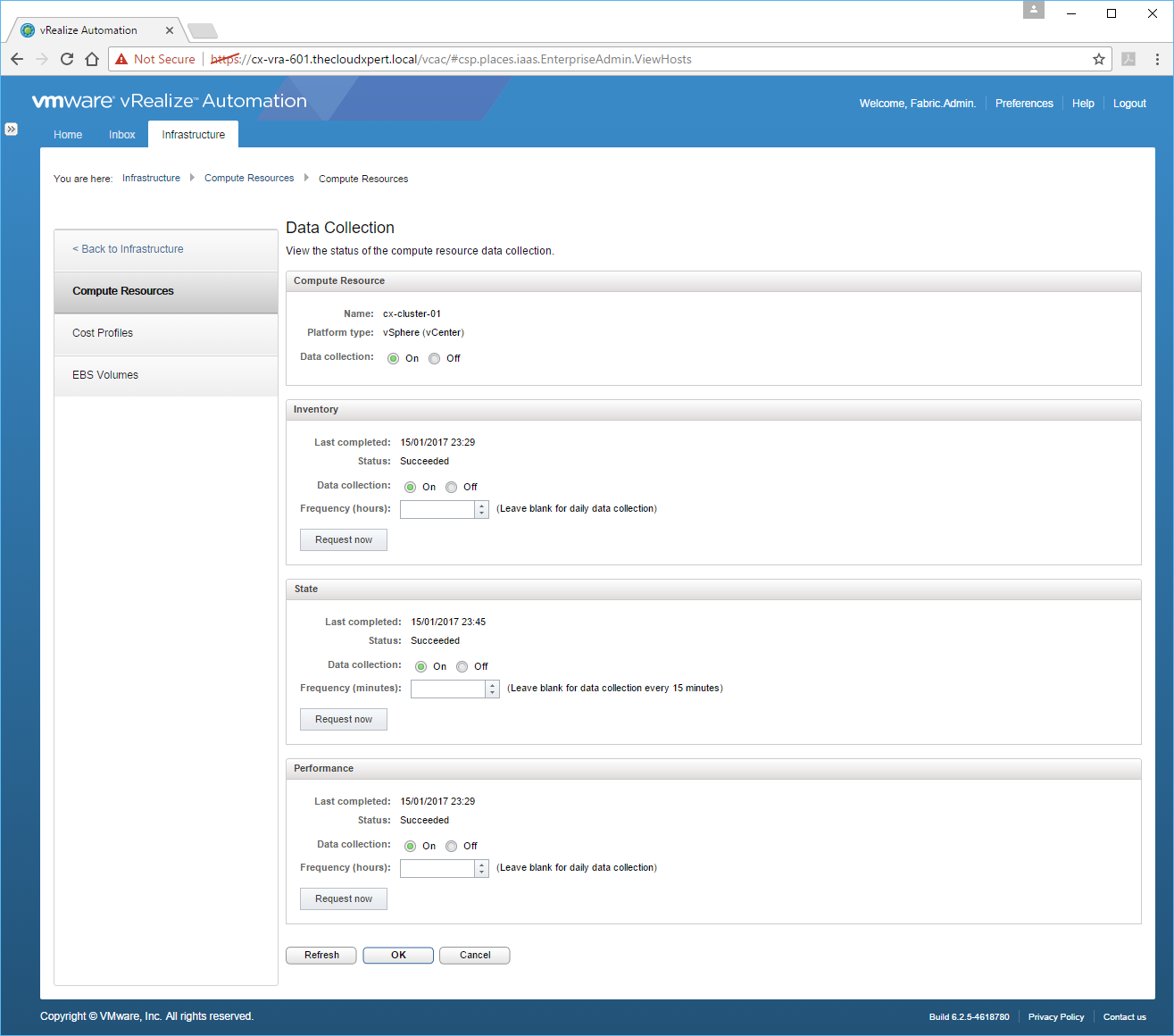
Here you can choose to:
- Turn ALL Data Collection off completely.
- Turn either Inventory, State or Performance Data Collection off completely.
- Set the Frequency of the Inventory, State or Performance Data Collection.
- Request an immediate Inventory, State or Performance Data Collection.
Click OK to return.
Configure endpoint parameters (credentials, hostname, etc-) for infrastructure and cloud endpoints
Once an Endpoint has been created, you can make changes to it but must be wary that any changes made may alter the data collections. In this example, I’m going to add a Property to the endpoint to support SRM failover but I could be changing anything here.
Navigate to the Default Tenant vRealize Automation Portal (https://vra.fqdn/vcac).

Login with the Infrastructure Admin account.

Click Infrastructure.

Click Endpoints > Endpoints
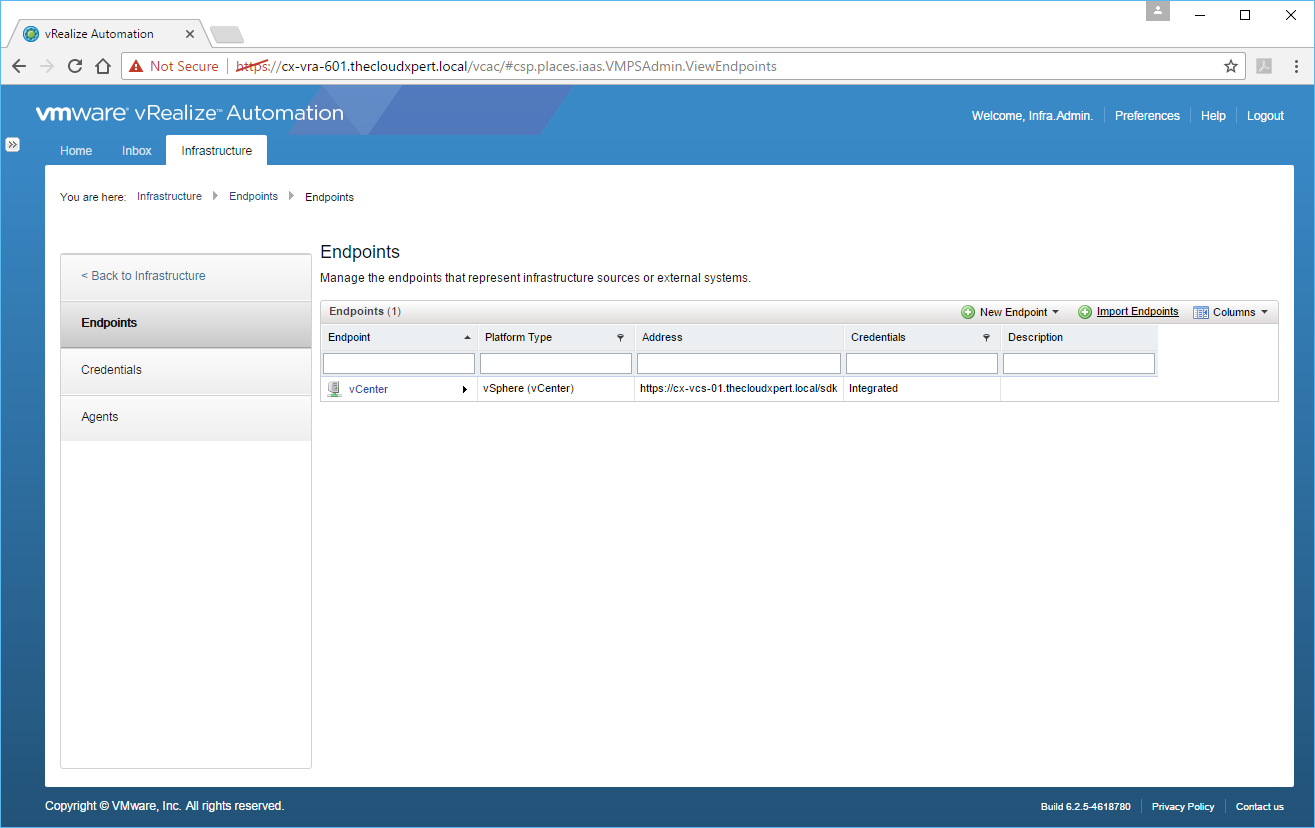
Click on the Endpoint you want to update (in this example vCenter).
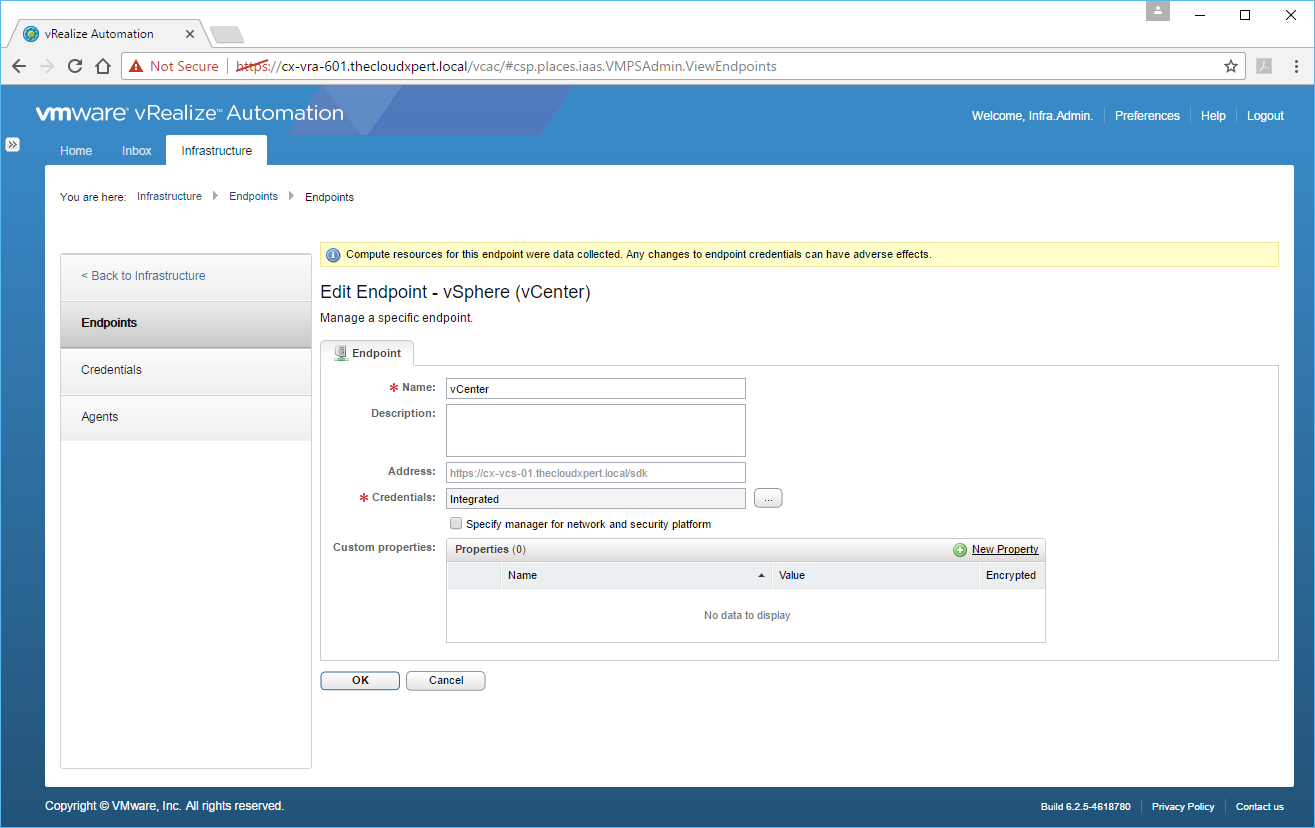
Click New Property.
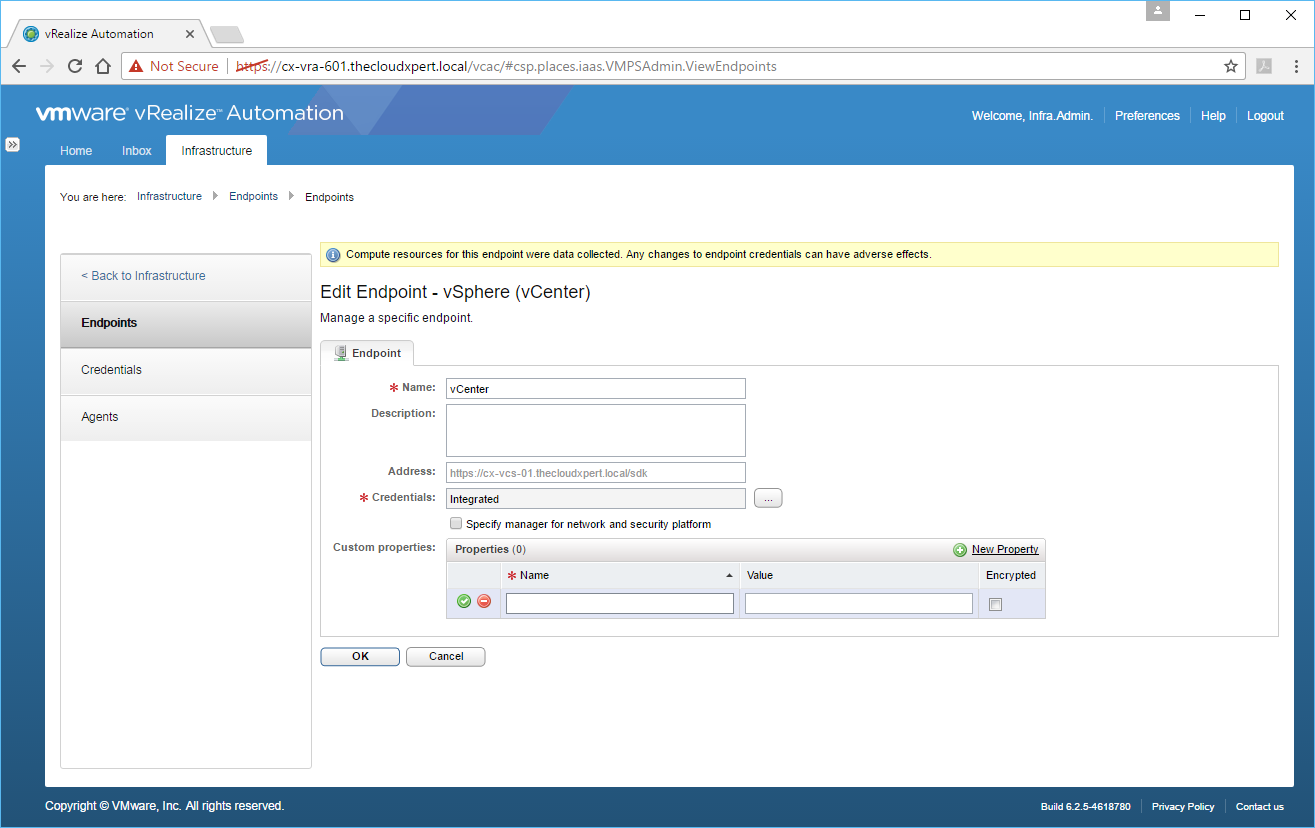
Under Property enter the Name and Value as required and click Save icon (green tick).
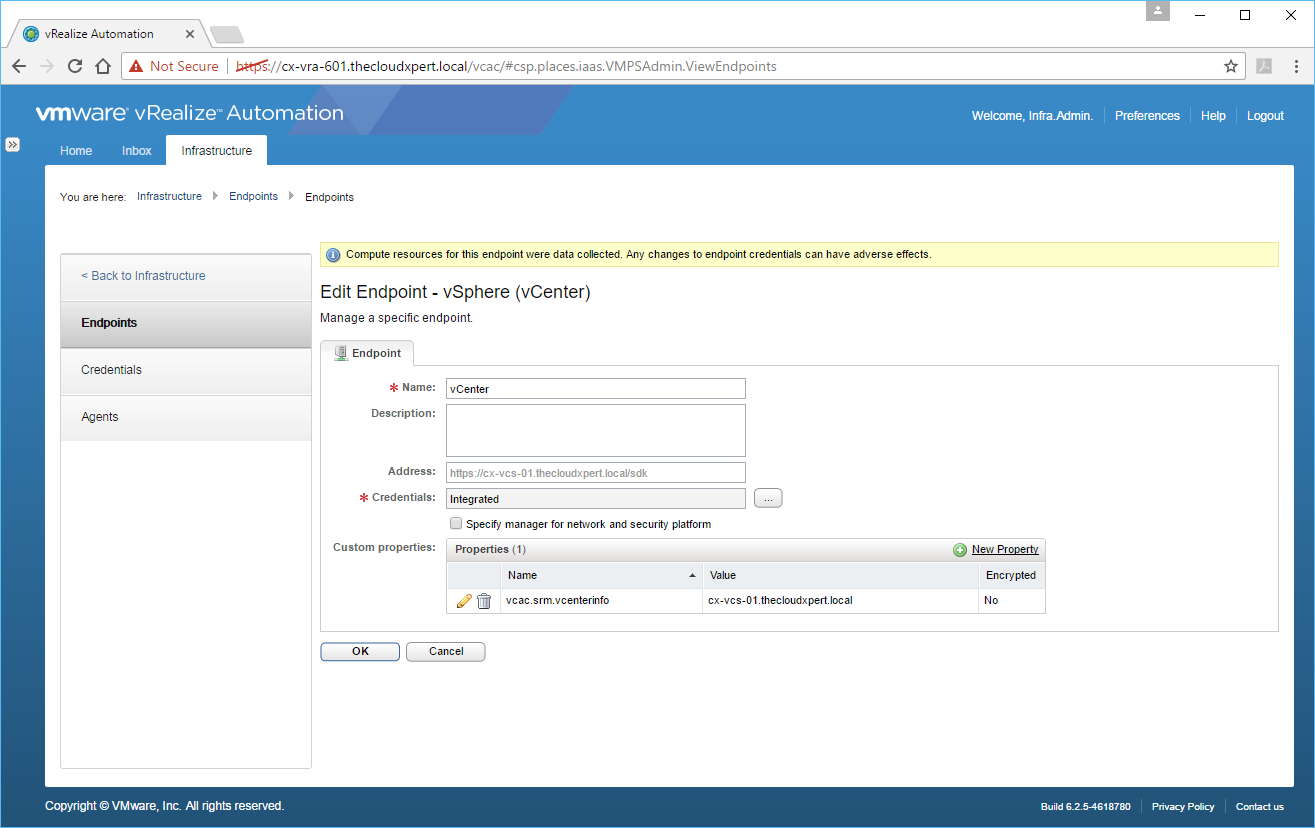
Click OK.
Published on 16 January 2017 by Christopher Lewis. Words: 711. Reading Time: 4 mins.
- HOWTO: Create a vSphere Endpoint in VMware vRealize Automation 6.x ()
- VCAP6-CMA Deploy - Objective 2.1: Configure Tenant Properties ()
- HOWTO: Install the VMware vRealize Automation 6.x IaaS Components (Simple Install) ()
- HOWTO: Install the VMware vRealize Automation 6.x IaaS Prerequisites ()
- VCAP6-CMA Deploy - Objective 1.1: Deploy and Manage a vRA Appliance and IaaS Server as Single nodes ()
